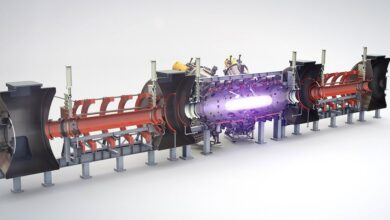The Top Programming Languages 2023

Welcome to IEEE Spectrum’s 10th annual rankings of the Top Programming Languages. While the way we put the TPL together has evolved over the past decade, the basics remain the same: to combine multiple metrics of popularity into a set of rankings that reflect the varying needs of different readers.
This year, Python doesn’t just remain No. 1 in our general “Spectrum” ranking—which is weighted to reflect the interests of the typical IEEE member—but it widens its lead. Python’s increased dominance appears to be largely at the expense of smaller, more specialized, languages. It has become the jack-of-all-trades language—and the master of some, such as AI, where powerful and extensive libraries make it ubiquitous. And although Moore’s Law is winding down for high-end computing, low-end microcontrollers are still benefiting from performance gains, which means there’s now enough computing power available on a US $0.70 CPU to make Python a contender in embedded development, despite the overhead of an interpreter. Python also looks to be solidifying its position for the long term: Many children and teens now program their first game or blink their first LED using Python. They can then move seamlessly into more advanced domains, and even get a job, with the same language.
But Python does not make a career alone. In our “Jobs” ranking, it is SQL that shines at No. 1. Ironically though, you’re very unlikely to get a job as a pure SQL programmer. Instead, employers love, love, love, seeing SQL skills in tandem with some other language such as Java or C++. With today’s distributed architectures, a lot of business-critical data live in SQL databases, whether it’s the list of magic spells a player knows in an online game or the amount of money in their real-life bank account. If you want to to do anything with that information, you need to know how to get at it.
But don’t let Python and SQL’s rankings fool you: Programming is still far from becoming a monoculture. Java and the various C-like languages outweigh Python in their combined popularity, especially for high-performance or resource-sensitive tasks where that interpreter overhead of Python’s is still too costly (although there are a number of attempts to make Python more competitive on that front). And there are software ecologies that are resistant to being absorbed into Python for other reasons.
We saw more fintech developer positions looking for chops in Cobol than in crypto
For example, R, a language used for statistical analysis and visualization, came to prominence with the rise of big data several years ago. Although powerful, it’s not easy to learn, with enigmatic syntax and functions typically being performed on entire vectors, lists, and other high-level data structures. But although there are Python libraries that provide similar analytic and graphical functionality, R has remained popular, likely precisely because of its peculiarities. They make R scripts hard to port, a significant issue given the enormous body of statistical analysis and academic research built on R. Entire fields of researchers and analysts would have to learn a new language and rebuild their work. (Side note: We use R to crunch the numbers for the TPL.)
This situation bears similarities to Fortran, where the value of the existing validated code for physics simulations and other scientific computations consistently outweighs the costs associated with using one of the oldest programming languages in existence. You can still get a job today as a Fortran programmer—although you’ll probably need to be able to get a security clearance, since those jobs are mostly at U.S. federal defense or energy labs like the Oak Ridge National Laboratory.
If you can’t get a security clearance but still like languages with more than a few miles on them, Cobol is another possibility. This is for many of the same reasons we see with Fortran: There’s a large installed code base that does work where mistakes are expensive. Many large banks still need their Cobol programmers. Indeed, based on our review of hundreds of developer recruitment ads, it’s worth noting that we saw more fintech developer positions looking for chops in Cobol than in crypto.
Veteran languages can also turn up in places you might not expect. Ladder Logic, created for industrial-control applications, is often associated with old-fashioned tech. Nonetheless, we spotted a posting from Blue Origin, one of the glamorous New Space outfits, looking for someone with Ladder Logic skills. Presumably that’s related to the clusters of ground equipment needed to fuel, energize, and test boosters and spacecraft, and which have much more in common with sprawling chemical refineries than soaring rockets.
Ultimately, the TPL represents Spectrum‘s attempt to measure something that can never be measured exactly, informed by our ongoing coverage of computing. Our guiding principle is not to get bogged down in debates about how programming languages are formally classified, but instead ground it in the practicalities relevant to folks tapping away at their keyboards, creating the magic that makes the modern world run. (You can read more about the metrics and methods we use to construct the rankings in our accompanying note.) We hope you find it useful and informative, and here’s to the next 10 years!
IEEE Spectrum




